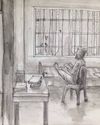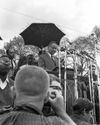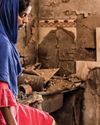How an ancient art form became a symbol of resistance

On a Sunday morning at the usually crowded Bandra Kurla Complex in Mumbai, the loud beating of drums began echoing through empty streets. It was a group of youths from Dharavi, the largest slum in Asia, who had gathered for their weekly practice of parai attam.
The youths, part of a group called the Neelam Kalai Kuzhu—Blue Arts Collective—began by chanting a Tamil slogan:
Parai ongi olikatum
Idhu uzhaikum makkalin viduthalaikai
Engal parai mulakam savukaga alla
Uzhaikum makkalin valvukaga
Onki adipathil kiliyatum
Paraigal alla suya sathiya perumai
pesuvor mugathiraigal
Let the parai sound loudly For the freedom of the working people Our parai shouts not for death But for the life of the working people By beating loudly Let the veils of proud casteists be torn apart
Parai attam refers to a performance of the parai—a hollow drum made of a wooden frame, with cow skin stretched over one side, played with sticks of unequal size and thickness—accompanied by a folk dance. The parai is said to be one of the oldest percussion instruments in human history. It has its origins in ancient Tamil society, where it had several uses: gathering people, broadcasting announcements and warnings, celebrating weddings and festivals, as well as invoking divine spirits during funeral processions.
This story is from the August 2019 edition of The Caravan.
Start your 7-day Magzter GOLD free trial to access thousands of curated premium stories, and 8,500+ magazines and newspapers.
Already a subscriber ? Sign In
This story is from the August 2019 edition of The Caravan.
Start your 7-day Magzter GOLD free trial to access thousands of curated premium stories, and 8,500+ magazines and newspapers.
Already a subscriber? Sign In

Mob Mentality
How the Modi government fuels a dangerous vigilantism

RIP TIDES
Shahidul Alam’s exploration of Bangladeshi photography and activism

Trickle-down Effect
Nepal–India tensions have advanced from the diplomatic level to the public sphere

Editor's Pick
ON 23 SEPTEMBER 1950, the diplomat Ralph Bunche, seen here addressing the 1965 Selma to Montgomery March, was awarded the Nobel Peace Prize. The first black Nobel laureate, Bunche was awarded the prize for his efforts in ending the 1948 Arab–Israeli War.

Shades of The Grey
A Pune bakery rejects the rigid binaries of everyday life / Gender

Scorched Hearths
A photographer-nurse recalls the Delhi violence

Licence to Kill
A photojournalist’s account of documenting the Delhi violence

CRIME AND PREJUDICE
The BJP and Delhi Police’s hand in the Delhi violence

Bled Dry
How India exploits health workers

Status Update
India’s telling silence on the Hagia Sophia controversy